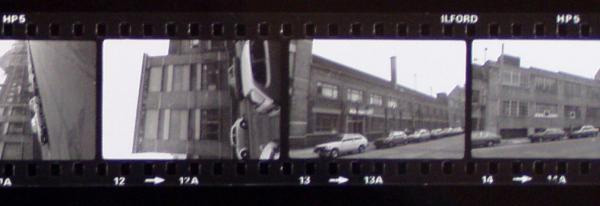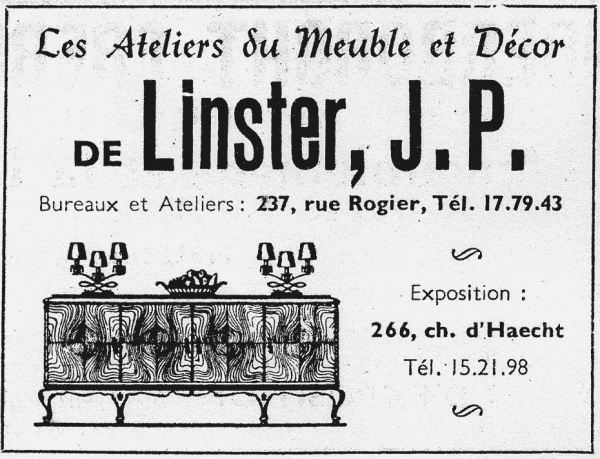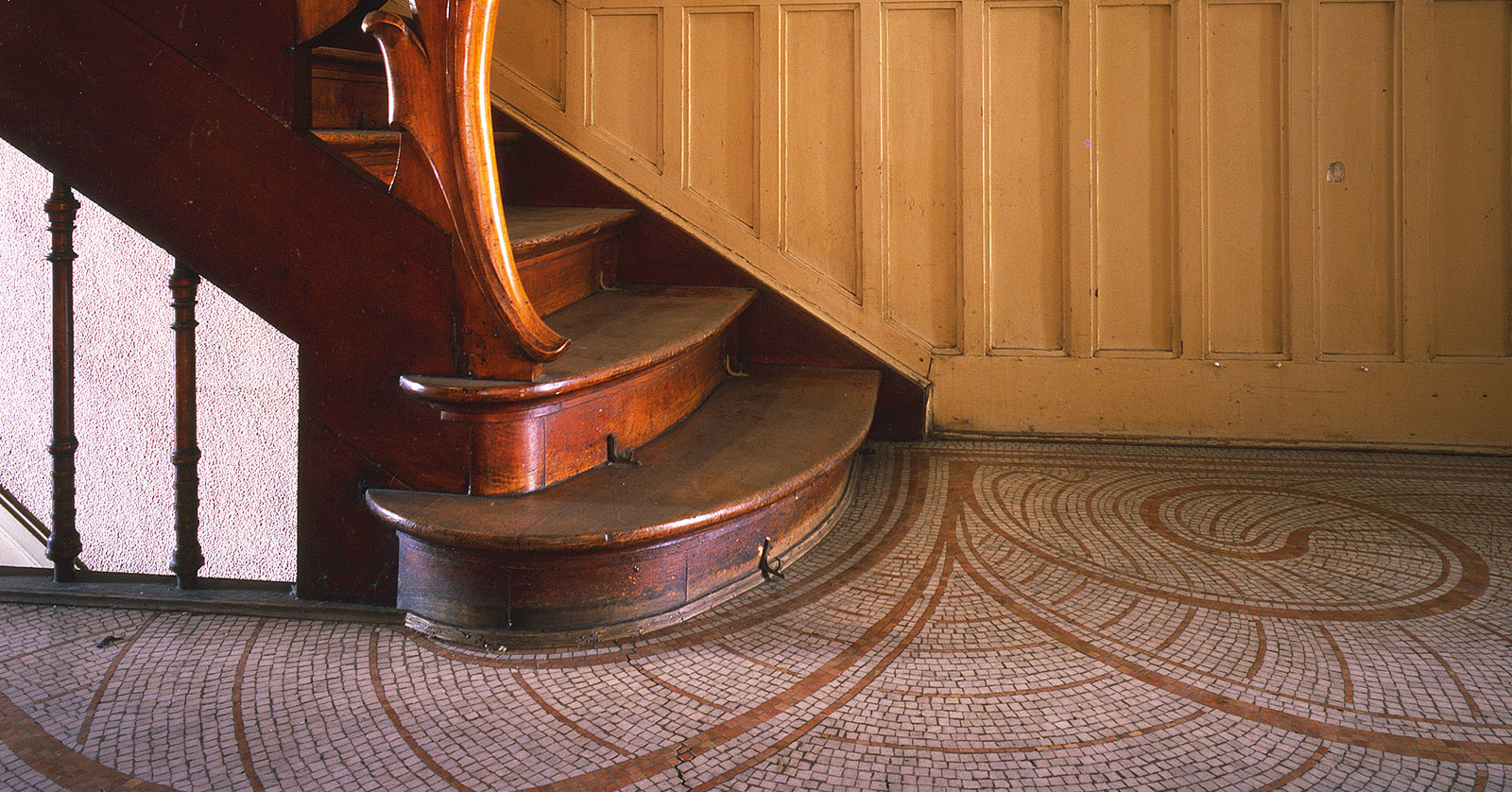1893-1907
Eugène Autrique was the oldest of four. A graduate in mechanical engineering, he had recently been given a chair at the École Polytechnique, a department in Brussels Université Libre. He was a colleague of Emile Tassel, whom he also knew through the Masonic lodge of the “Amis Philanthropes”. The Autriques were not that rich, and it has gone on record that Horta scaled down his fees in order to be able to use his chosen materials. The house, though modest in the eye of the architect, was quite big enough for a small family: the Autrique couple had one son and would have no more children. They moved in during the year 1895, and lived there for about twelve years. It is more than likely that the chores went to a servant living in-house in the attic. All in all, the Autriques are representative of that century’s middle-class families, with personal histories pretty much in line with contemporary life. Engineer Autrique’s life may well have been be to intents and purposes conventional but he was surrounded by a crowd of uncles, aunts and cousins, artists or industrialists, taking the name to the ends of the world, to Mexico or the Congo. Eugène Autrique’s travels took an other form, for instance in his capacity as secretary of Constantinople Gas Company, or of the “Société Anonyme Luxembourgeoise des Chemins de Fer et Minières Prince Henri”, the forerunner to the current Luxembourg Railways, whilst being in charge of graphic design and topography at the Université Libre. For obscure reasons, the family parted with the house in the autumn of 1907, when it was sold as the Autriques moved to Tervuren, on the outskirts of Brussels. They lived in a detached house surrounded by a magnificent garden. Unfortunately, Eugène Autrique had to resign his chair on grounds of ill-health in 1912: he was to die a few months later.
1907-1943
 The new incumbent of 266 Chaussée de Haecht was named Alfred Duchateau: he was a young engineer from the Centre of the country, whose family had made its fortune in the steel industry. Having left the family seat at the Groseillon, he settled in Brussels to set up in Schaerbeek “Les Meules Duchateau” (a Millstones business). His workshops were situated near the station, a matter of minutes away from his new house. Under the impulse of its founder, the small plant grew exponentially: the factory would gradually takeover the whole street block with a workforce of 150. Alfred and his family would not spend much time in Maison Autrique: at the onset of the Great war, the family left the country, some for the UK, some for France. Soon his younger brother, Edmond, moved in and was so taken with the house that he bought it in 1922. As did happen fairly often at the time, the brothers married two sisters: Alfred married Denise and young Edmond Magdeleine Hiart. The latter, the new owner, was not a hard worker like his elder brother, he preferred golf and hunting to the running of the family business. He would mainly deal with the department of research and development of millstones, leaving the management side to his nephew. At the end of the thirties, three generations were living in Maison Autrique: Edmond and Magdeleine were grand-parents, and shared their home with their children and grand-children not forgetting the youngest’s nanny. Through inheritance, the house remained the property of the Duchateau-Hiart family from 1907 to 1986 but its members would only live in it just over thirty years, all told. for, along with many people in Belgium, Edmond and Magdeleine Duchateau took to the roads upon its invasion in June1 1940. They abandoned the house to take refuge in Brittany, in Carnac; on their return, a few months later, they settled in Watermael-Boitsfort, south of Brussels, preferring its more airy environment to Chaussée de Haecht. The Maison Autrique would remain empty from that date to 1943.
The new incumbent of 266 Chaussée de Haecht was named Alfred Duchateau: he was a young engineer from the Centre of the country, whose family had made its fortune in the steel industry. Having left the family seat at the Groseillon, he settled in Brussels to set up in Schaerbeek “Les Meules Duchateau” (a Millstones business). His workshops were situated near the station, a matter of minutes away from his new house. Under the impulse of its founder, the small plant grew exponentially: the factory would gradually takeover the whole street block with a workforce of 150. Alfred and his family would not spend much time in Maison Autrique: at the onset of the Great war, the family left the country, some for the UK, some for France. Soon his younger brother, Edmond, moved in and was so taken with the house that he bought it in 1922. As did happen fairly often at the time, the brothers married two sisters: Alfred married Denise and young Edmond Magdeleine Hiart. The latter, the new owner, was not a hard worker like his elder brother, he preferred golf and hunting to the running of the family business. He would mainly deal with the department of research and development of millstones, leaving the management side to his nephew. At the end of the thirties, three generations were living in Maison Autrique: Edmond and Magdeleine were grand-parents, and shared their home with their children and grand-children not forgetting the youngest’s nanny. Through inheritance, the house remained the property of the Duchateau-Hiart family from 1907 to 1986 but its members would only live in it just over thirty years, all told. for, along with many people in Belgium, Edmond and Magdeleine Duchateau took to the roads upon its invasion in June1 1940. They abandoned the house to take refuge in Brittany, in Carnac; on their return, a few months later, they settled in Watermael-Boitsfort, south of Brussels, preferring its more airy environment to Chaussée de Haecht. The Maison Autrique would remain empty from that date to 1943.
1943-1986
 Half way through the war, cabinet-maker Jean-Pierre Linster rented the house. The ground floor and the first floor were converted into showrooms for the furniture manufactured in workshops set a few streets further whilst the basement and the second floor continued to serve as housing quarters. The maid-servant had a room fixed up in the attic. Not by chance did the cabinet-maker’s choice fall on Maison Autrique: he had heard of Victor Horta and rightly thought that the house offered just the right setting for his top of the range furniture products. Over those years, the house had a double life the strands of which rarely met. To the slow rhythm of the shop section was superposed the rhythm of everyday life. Home life was most peculiar with the kitchen-basement and the second floor inhabited by the family, whilst the fine rooms of the ground and first floor were devolved to the display of furniture. The place proved a wonderful playground for the owners’ daughter. She and her husband were to take over the running of the shop in 1975. This was the most stable period the house lived through: forty quiet years spent welcoming customers. The Linsters left the premises 1986, to settle in its immediate neighbourhood as Maison Autrique changed hands again.
Half way through the war, cabinet-maker Jean-Pierre Linster rented the house. The ground floor and the first floor were converted into showrooms for the furniture manufactured in workshops set a few streets further whilst the basement and the second floor continued to serve as housing quarters. The maid-servant had a room fixed up in the attic. Not by chance did the cabinet-maker’s choice fall on Maison Autrique: he had heard of Victor Horta and rightly thought that the house offered just the right setting for his top of the range furniture products. Over those years, the house had a double life the strands of which rarely met. To the slow rhythm of the shop section was superposed the rhythm of everyday life. Home life was most peculiar with the kitchen-basement and the second floor inhabited by the family, whilst the fine rooms of the ground and first floor were devolved to the display of furniture. The place proved a wonderful playground for the owners’ daughter. She and her husband were to take over the running of the shop in 1975. This was the most stable period the house lived through: forty quiet years spent welcoming customers. The Linsters left the premises 1986, to settle in its immediate neighbourhood as Maison Autrique changed hands again.
1986-1996
The last owner reluctantly accepted to part with it for a couple of artists who wished to return it to its former glory. The new owners immediately fell in love with the house. They had soon set in train a first restoration project the first outwards sign of which was a grand cleaning of the facade. Message received by tourists who flocked back to the house in the wake of renewed interest in Art Nouveau. At the same time, the walls and columns were the object of a first investigation; this loving interest gave rise to an in-depth study. The funding it pointed to unfortunately just could not be found. The couple’s activities regularly took them away from Brussels, and that empty house was an easy target for robbers. The couple fixed an alarm, secured the doors and more importantly offered the use of the place to a friend freshly arrived from abroad. This last tenant would act as a caretaker for a few months from February 1993 on. But life in a large house perhaps a little dark is not everyone’s cup of tea: she would return her key in December of the same year.
